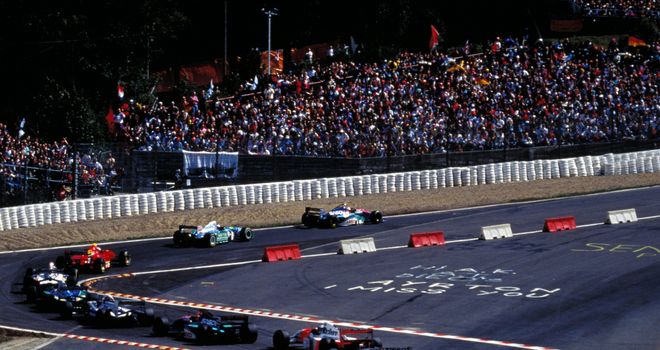Thursday, 1 May 2014 will be a poignant day for F1 fans - it will be the 20th anniversary of the untimely death of legendary driver, Ayrton Senna at the Autodromo Enzo e Dino Ferrari in Imola.
While many Senna fans prefer not to celebrate his career on the day he died, preferring to do that on his birthday on March 21, the day his soul and talent left this world forever is still very much significant and poignant for drivers and fans who love Formula 1 and still re-live the images from that day that will haunt us forever.
Indeed, 20 years on, had it not been for the fatal crashes that killed Senna - and Roland Ratzenberger and nearly Rubens Barrichello - that weekend, I dare say Formula 1 would not be what it is today - a sport that is thrilling and exciting to watch yet safe for its participants who are still risking their lives driving the fastest cars on earth.
The immediate effect of those deaths was very clear to see in that 1994 season with holes cut into cars, wing sizes cut down and barge boards placed under cars, along with chicanes put at fast corners at Barcelona, Montreal and Spa Francorchamps's F1 circuits (remember the chicane at the bottom of Eau Rouge?) - thankfully circuit owners would redesign the corners to ensure those chicanes were a one-off and future circuits were eventually designed with wide tarmac and big run-off areas as demanded by the FIA.
 |
| Chicane at Eau Rouge, 1994 Belgian Grand Prix |
Testament to that is the big crashes we've seen in the last 20 years involving the likes of Robert Kubica and Michael Schumacher that left them with broken bones - such crashes would have almost certainly killed them pre-1994.
The FIA continues to do so even if the focus is now on being environmentally relevant now that F1 has shown it can build the fastest yet safest cars in the world. This year's V6 turbo powered F1 cars with their controversial wing designs are almost certainly the safest racing cars in the world.
What about the drivers? The drivers remain as daring and talented as they did in Senna's time - but with the safety culture now in place in F1, we are quite certainly no more at risk of losing a generation of talented drivers like we did in the 1960s and 1970s.
 |
| 4-time champion Sebastian Vettel is very much a driver in the Senna mould - fast in qualifying, aggressive in the race |
So while Senna may be dead now for 20 years, his legacy lives on and it's not just the memory of those brilliant drives at Estoril and Donington Park.
Perhaps, the greatest mark he left is leaving a sport fighting hard to ensure that a generation who adored him and sought to follow in his footsteps would be able to do so knowing they would be coming home from each grand prix and testing session.
F1 may not be completely safe - the death of Maria de Villota following a straight-line testing session for Williams in 2013 is a reminder of that - and will never be. But it has never been safer and more popular and relevant to its fans than ever.
Adieu Ayrton.


No comments:
Post a Comment